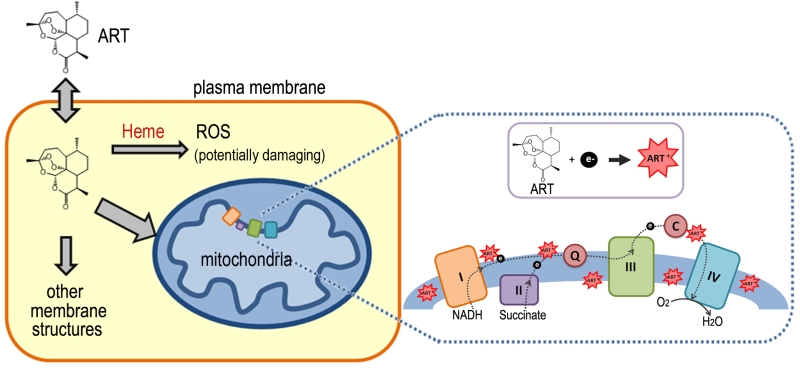FIGURE 3: What happens to ART when it gets into cells? A schematic showing how ART behaves in the context of a cell. ART is permeable to the cell membrane. Inside the cells, it is preferentially distributed to all membranes due to its poor solubility in aqueous solution. ART reacts with accessible heme and as a result, generate ROS, which is a potentially damaging agent. When this ROS level is high, relatively non-specific damages could be inflicted to the cell. This action is heme-dependent and could explain ARTs’ action against cancer cells and yeast on fermentable media. A portion of ART gets into mitochondria, where a potent and specific action might occur, depending on the species. In malaria parasites and Baker’s yeast, the mitochondria and ART interact with each other and generate mitochondrial dysfunctions, whereas in mammalian cells little mitochondrial actions was observed. The nature of how ART is activated in mitochondria is not certain.
By continuing to use the site, you agree to the use of cookies. more information
The cookie settings on this website are set to "allow cookies" to give you the best browsing experience possible. If you continue to use this website without changing your cookie settings or you click "Accept" below then you are consenting to this. Please refer to our "privacy statement" and our "terms of use" for further information.

